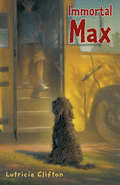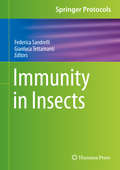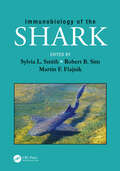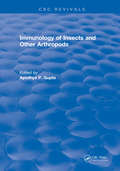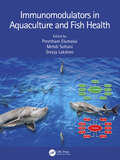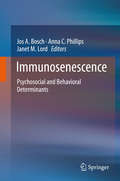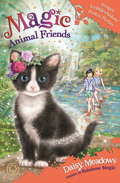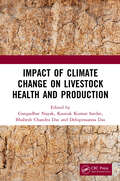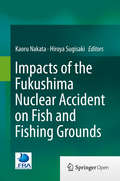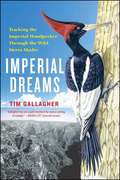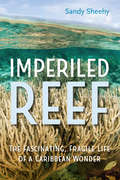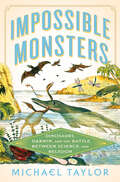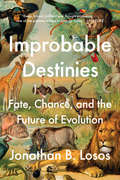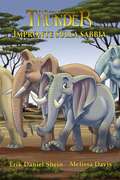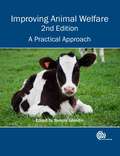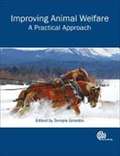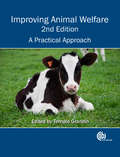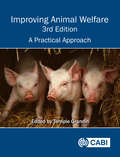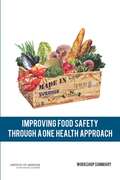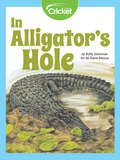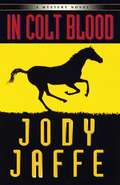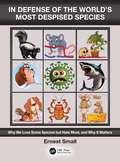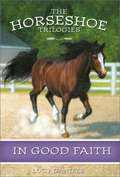- Table View
- List View
Immortal Max
by Lutricia CliftonTwelve-year-old Sam dreams of owning a purebred puppy, convinced they are superior to a mongrel like Max, the family's ancient pet. Smelly, disheveled, and affectionate, Max is a walking miracle. Near death's door when Sam's sister rescued him, Max survived and seems immortal. That's too bad, for Sam's mother says no new dog if it's going to bother Max. Undaunted, Sam decides to save enough money to buy a puppy anyway and takes a job walking dogs in CountryWood, the fancy gated community in his rural town. There he clashes with Justin, a rich, pampered "burbie" who owns just the kind of dog Sam wants: a sable German shepherd. Justin is determined to get Sam fired and destroy his dream. Their feud, echoing the conflict between rich city transplants and the townies, escalates into violence. This heartwarming story of a boy and his dogs is filled with memorable characters--both human and canine.
Immunity in Insects (Springer Protocols Handbooks)
by Federica Sandrelli Gianluca TettamantiThis volume details methods and protocols necessary to further the study of insect immunity. Chapters guide readers through up-to-date genomic and transcriptomic approaches, insect samples for proteomic analysis, hemocytes in Drosophila, cellular response in Lepidoptera, insect AMPs, manipulate the composition of mosquito microbiota, viral infections in insects, infections by entomopathogenic nematodes, immune response following oral infections, and protocols to to monitor the effect of septic infections with human pathogens using B. mori as a model. Written in the highly successful Methods in Molecular Biology series format, chapters include introductions to their respective topics, lists of the necessary materials and reagents, step-by-step, readily reproducible laboratory protocols, and tips on troubleshooting and avoiding known pitfalls. Authoritative and cutting-edge, Immunity in Insects aims to ensure successful results in the further study of this vital field.
Immunobiology of the Shark
by Sylvia L. SmithSharks belong to the oldest vertebrate species that possess immune systems similar to that of mammals. This makes them a great model species to study the fundamentals of the mammalian immune system. This book describes the cellular, genetic, and molecular specifics of immune systems in sharks and uses them to understand shark immunity as well as the evolution of immune systems in more recently-evolved vertebrates. Written by global experts, the book will be a resource for immunologists, geneticists, ecologists, evolutionary and conservation biologists, and investigators engaged in shark research.
Immunology of Insects and Other Arthropods
by Ayodhya P. GuptaIn insect and other arthropod immune systems, discrimination between self and nonself tissues is accomplished through the combined actions of two immunocytes and several humoral factors. Immunology of Insects and Other Arthropods presents a comprehensive look at this and other important topics in arthropod immunology. Issues discussed include insect immunocytes and other hemocytes, including computer image analysis of immunocyte serial sections; the two basic cellular immune reactions (phagocytosis and encapsulation), including the molecular basis and roles of gap junctions in encapsulation; how encapsulation is affected by polydnavirus and encapsulation-promoting factors; why insect cells are immune to HIV; humoral factors; and antibacterial factors in Lepidoptera, Diptera, and other insect orders. Other topics include hemolymph proteins interacting with mammalian complement cascade; adaptive humoral response in the American cockroach; antigenic stimulation of hemaglutinin production in insects; and the applications of the Limulus Amebocyte Lysate (LAL) in detecting endotoxins in pharmaceuticals, medical devices, clinical diagnosis, and hygienic control. This book represents an important reference source for hematologists, pathologists, immunologists, AIDS researchers, comparative immunologists, and pharmaceutical companies.
Immunomodulators in Aquaculture and Fish Health
by Preetham Elumalai Sreeja Lakshmi Mehdi SoltaniThis reference book provides updated information about different immunomodulators for managing fish health and sustainable aquaculture. Immunomodulators are dietary additives that enhance innate defense mechanisms and increase resistance against specific pathogens and diseases. The book covers the different types of immunostimulants, their modes of action, and their efficacies. It also reviews safety concerns, ethical regulations, limitations, and outreach to farmers. It discusses the application of herbal immunomodulators, antioxidants, pre- and pro-biotics, in disease management. Features:• Reviews the pressing topic of reduction of antibiotic use in aquaculture • Discusses herbal immunomodulators, nutrients, antioxidants and pre- and pro-biotics • Covers the topic of progressive immunomodulation using nanotechnology • Discusses fish health management in the ever-growing aquaculture industry • Includes natural and synthetic immunomodulators The book is meant for researchers and industry experts in aquaculture, fisheries science, and veterinary medicine.
Immunosenescence
by Jos A. Bosch Anna C. Phillips Janet M. LordImmunosenescence is a unique, multi-disciplinary approach to the understanding of immune aging. It addresses the topic from the biological, as well as the psychological, social and behavioral perspectives. It is, thus, a valuable and timely addition to the literature in this area. Contributors include experts in the field, reviewing the state of the art in research.
Imogen Scribblewhiskers' Perfect Picture: Book 32 (Magic Animal Friends #31)
by Daisy MeadowsAn enchanting series full of adorable animals, magic and friendship - from the creator of RAINBOW MAGIC, the UK's bestselling series for girls aged 5-7.Welcome to a magical world where animals talk and play - just like you and me!Best friends Jess and Lily love all animals. But when they follow a mysterious golden cat into Friendship Forest - a place where animals live in tiny cottages and sip dandelion tea at the Toadstool Cafe - their animal friends suddenly become much more magical!
Impact of Climate Change on Livestock Health and Production
by G D Nayak K K Sardar B C Das D P DasThis volume of 30 chapters contributed by reputed authors covers: Diversification of livestock and crops. Integration of livestock systems with forestry and crop production. Drought and heat wave tolerant varieties. Strategies for reduction of Green House Gases emission from ruminants. Application of GIS and remote sensing technologies. Breeds with inherent genetic capabilities to adapt to climate change. This book also takes into account the climate change adaptation, mitigation practices, and policy frameworks for promotion of sustainable livestock and poultry production. This book is co-published with NIPA. Taylor and Francis does not sell or distribute its print and electronic editions in India, Pakistan, Nepal, Bhutan, Bangladesh and Sri Lanka.
Impacts of the Fukushima Nuclear Accident on Fish and Fishing Grounds
by Kaoru Nakata Hiroya SugisakiThis book presents the results from the Japanese Fisheries Research Agency's 3-year intensive monitoring of radionuclides in a variety of fish, plankton, benthos, and their living environments after the Fukushima Daiichi Nuclear Power Plant (FNPP) accident in March 2011. The book reveals the dynamics of contamination processes in marine and freshwater fish, mediated by the contamination of water, sediments, and food organisms; it also clarifies the mechanisms by which large variations in the level of contamination occurs among individual fish. Most importantly, the book includes a large amount of original measurement data collected in situ and for the first time assesses diffusion of radiocesium across the Pacific using both in situ data and a numerical simulation model. Also introduced are several new approaches to evaluate the impact of the release of radionuclides, including the measurement of radiation emission from an otolith section to identify the main period of contamination in fish. The FNPP accident represents a rare instance where the environmental radioactivity level was elevated steeply through atmospheric fallout and direct discharge of radioactive water into the sea over a short period of time. Replete with precise scientific data, this book will serve as an important resource for research in fields such as fishery science, oceanography, ecology, and environmentology, and also as a solid basis for protecting fisheries from damage resulting from harmful rumors among the general public.
Imperial Dreams: Tracking the Imperial Woodpecker Through the Wild Sierra Madre
by Tim GallagherA decade ago, Tim Gallagher was one of the rediscoverers of the legendary ivory-billed woodpecker, which most scientists believed had been extinct for more than half a century—now Gallagher once again hits the trail, journeying deep into Mexico&’s savagely beautiful Sierra Madre Occidental, home to rich wildlife, as well as to Mexican drug cartels, in a perilous quest to locate the most elusive bird in the world—the imperial woodpecker.The imperial woodpecker&’s trumpetlike calls and distinctive hammering on massive pines once echoed through the high forests. Two feet tall, with deep black plumage, a brilliant snow-white shield on its back, and a crimson crest, the imperial woodpecker had largely disappeared fifty years ago, though reports persist of the bird still flying through remote mountain stands. In an attempt to find and protect the imperial woodpecker in its last habitat, Gallagher is guided by a map of sightings of this natural treasure of the Sierra Madre, bestowed on him by a friend on his deathbed. Charged with continuing the quest of a line of distinguished naturalists, including the great Aldo Leopold, Gallagher treks through this mysterious, historically untamed and untamable territory. Here, where an ancient petroglyph of the imperial can still be found, Geronimo led Apaches in their last stand, William Randolph Hearst held a storied million-acre ranch, and Pancho Villa once roamed, today ruthless drug lords terrorize residents and steal and strip the land. Gallagher&’s passionate quest takes a harrowing turn as he encounters armed drug traffickers, burning houses, and fleeing villagers. His mission becomes a life-and-death drama that will keep armchair adventurers enthralled as he chases truth in the most dangerous of habitats.
Imperiled Reef: The Fascinating, Fragile Life of a Caribbean Wonder
by Sandy SheehyThe beauty and drama of a world beneath the surface of the waves This book brings alive the richly diverse world of an underwater paradise: the Mesoamerican Barrier Reef. Stretching 625 miles through the Caribbean Sea along the coasts of Mexico, Belize, Guatemala, and Honduras, this reef is the second largest coral structure on the planet. Imperiled Reef searches out the breathtaking intricacies of this endangered ecological treasure. Research shows that the future of the reef is at risk, Sheehy explains. Looking closely at threats ranging from global warming to overfishing to irresponsible development, Sheehy draws attention to the inspiring efforts of nongovernmental agencies, scientists, and local communities who are working together to address these challenges. She includes practical actions individuals can take to protect this reef—as well as marine ecosystems everywhere. Celebrating a vast, submerged landscape that has too often been undervalued, Imperiled Reef is both a strong case for protecting an international marvel and a powerful message of hope for the world’s oceans.
Impossible Monsters: Dinosaurs, Darwin, and the Battle Between Science and Religion
by Michael Taylor“Vivid with a Mesozoic bestiary” (Tom Holland), this on-the-ground, page-turning narrative weaves together the chance discovery of dinosaurs and the rise of the secular age. When the twelve-year-old daughter of a British carpenter pulled some strange-looking bones from the country’s southern shoreline in 1811, few people dared to question that the Bible told the accurate history of the world. But Mary Anning had in fact discovered the “first” ichthyosaur, and over the next seventy-five years—as the science of paleontology developed, as Charles Darwin posited radical new theories of evolutionary biology, and as scholars began to identify the internal inconsistencies of the Scriptures—everything changed. Beginning with the archbishop who dated the creation of the world to 6 p.m. on October 22, 4004 BC, and told through the lives of the nineteenth-century men and women who found and argued about these seemingly impossible, history-rewriting fossils, Impossible Monsters reveals the central role of dinosaurs and their discovery in toppling traditional religious authority, and in changing perceptions about the Bible, history, and mankind’s place in the world.
Improbable Destinies: Fate, Chance, and the Future of Evolution
by Jonathan B. LososA major new book overturning our assumptions about how evolution works Earth’s natural history is full of fascinating instances of convergence: phenomena like eyes and wings and tree-climbing lizards that have evolved independently, multiple times. But evolutionary biologists also point out many examples of contingency, cases where the tiniest change—a random mutation or an ancient butterfly sneeze—caused evolution to take a completely different course. What role does each force really play in the constantly changing natural world? Are the plants and animals that exist today, and we humans ourselves, inevitabilities or evolutionary flukes? And what does that say about life on other planets? Jonathan Losos reveals what the latest breakthroughs in evolutionary biology can tell us about one of the greatest ongoing debates in science. He takes us around the globe to meet the researchers who are solving the deepest mysteries of life on Earth through their work in experimental evolutionary science. Losos himself is one of the leaders in this exciting new field, and he illustrates how experiments with guppies, fruit flies, bacteria, foxes, and field mice, along with his own work with anole lizards on Caribbean islands, are rewinding the tape of life to reveal just how rapid and predictable evolution can be. Improbable Destinies will change the way we think and talk about evolution. Losos's insights into natural selection and evolutionary change have far-reaching applications for protecting ecosystems, securing our food supply, and fighting off harmful viruses and bacteria. This compelling narrative offers a new understanding of ourselves and our role in the natural world and the cosmos.
Impronte Sulla Sabbia: Il Viaggio Di Un Elefante Thunder (Collezione/Serie Thunder: Il viaggio di un elefante Serie letteraria #2)
by Melissa Davis Erik Daniel SheinUn piccolo elefante, una gigantesca avventura… La ricerca dell’avventura offrirà a Thunder più occasioni di quante potesse aspettarsi. Non avrebbe mai immaginato di ritrovarsi ancora una volta solo, ma le impronte lasciate da sua madre sulla sabbia gli faranno da guida per trovare la sua strada e cominciare una nuova vita. Durante il viaggio stringerà nuove amicizie: Razor, un leone scontento, Dash, una genetta molto veloce e Archie una lucertola loquace. Incontrerà anche due stravaganti gorilla di nome Harold e Neville. Poi Thunder visiterà di nuovo le grotte, dove si riappacificherà con i suoi vecchi amici. Insieme uniranno le forze per salvare la situazione e far sì che Thunder ritrovi la pace interiore.
Improving Animal Welfare
by Temple Grandin Jeffrey Rushen Jennifer Woods Anne De Passillé David Mellor David Main Kevin Stafford Jeff Hill Bernard Rollin Camie Heleski Janice Swanson Amy Mclean Lily Nowell Edwards Jan Shearer Helen Whay Tina WidowskiBy taking an entirely practical approach, this textbook aims to help those working with animals to apply methods for improving welfare, bridging the gap between scientific research and practical application. This book provides a guide to practical evaluation and auditing of welfare problems for farmed animals, emphasizing the importance of measuring conditions that compromise welfare such as lameness, or the use of electric goads. This second edition is fully updated with new literature, new, up to date coverage of pain management, and the addition of a new chapter on animal welfare in organic farming systems.
Improving Animal Welfare
by Temple GrandinNew legislation on animal welfare standards has created the need for welfare programmes to be implemented on farms, during transportation, and in slaughter plants. While there is a wealth of information on animal behaviour, ethics and factors effecting welfare, there is little to guide veterinarians and managers in evaluating animal welfare and improving it. This textbook aims to help those working with animals to apply practical methods for improving welfare, bridging the gap between scientific research and practical application. Drawing on the editor's extensive experience in teaching and auditing, and contributions from international experts, this book provides a guide to practical evaluation and auditing of welfare problems, emphasizing the importance of measuring conditions that compromise welfare. Key Features Written by a leading authority on the subject with contributions from industry experts Provides a strongly practical review of the topic and how to apply research where it makes a difference Ideal guide for veterinarians and veterinary students and welfare auditing and officer training, and students in animal sciences
Improving Animal Welfare: A Practical Approach
by Jeffrey Rushen Jennifer Woods Anne De Passillé David Mellor David Main Kevin Stafford Jeff Hill Bernard Rollin Camie Heleski Janice Swanson Lily Nowell Edwards Jan Shearer Helen Whay Tina Widowski Amy McLeanBy taking an entirely practical approach, this textbook aims to help those working with animals to apply methods for improving welfare, bridging the gap between scientific research and practical application. This book provides a guide to practical evaluation and auditing of welfare problems for farmed animals, emphasizing the importance of measuring conditions that compromise welfare such as lameness, or the use of electric goads. This second edition is fully updated with new literature, new, up to date coverage of pain management, and the addition of a new chapter on animal welfare in organic farming systems.
Improving Animal Welfare: A Practical Approach
by Jeffrey Rushen Jennifer Woods Anne Marie Anne Marie David Main Kevin Stafford Bernard Rollin Camie Heleski Janice Swanson Jan Shearer Helen Whay Tina Widowski Derek Donkin Amy McLean Kurt Vogel Lily N. Edwards-Callaway Madonna Benjamin Courtney Lynd Daigle Wendy K Fulwider Hubert J. Karreman David J Mellor Siobhan Mullan Steven Yik Upinder Kaur Richard M. Voyles Shawn DonkinCompletely revised, updated and with four new chapters on sustainability, new technologies, precision agriculture and the future of animal welfare, the third edition of this highly successful textbook: · Is edited by an outstanding world expert on animal welfare. · Emphasizes throughout the importance of measuring conditions that compromise welfare, such as lameness, heat stress, body condition, and bruises during transport. · Combines scientific information with practical recommendations for use on commercial operations. · Reviews practical information on livestock handling, euthanasia, slaughter, pain relief, and assessments of abnormal behavior. Improving Animal Welfare: A Practical Approach remains essential reading for students and practitioners of ethology, animal and veterinary science, veterinary medicine, as well as those working directly with farm animals and committed to improving their welfare.
Improving Food Safety Through a One Health Approach
by Eileen R. ChoffnesGlobalization of the food supply has created conditions favorable for the emergence, reemergence, and spread of food-borne pathogens-compounding the challenge of anticipating, detecting, and effectively responding to food-borne threats to health. In the United States, food-borne agents affect 1 out of 6 individuals and cause approximately 48 million illnesses, 128,000 hospitalizations, and 3,000 deaths each year. This figure likely represents just the tip of the iceberg, because it fails to account for the broad array of food-borne illnesses or for their wide-ranging repercussions for consumers, government, and the food industry-both domestically and internationally. A One Health approach to food safety may hold the promise of harnessing and integrating the expertise and resources from across the spectrum of multiple health domains including the human and veterinary medical and plant pathology communities with those of the wildlife and aquatic health and ecology communities. The IOM's Forum on Microbial Threats hosted a public workshop on December 13 and 14, 2011 that examined issues critical to the protection of the nation's food supply. The workshop explored existing knowledge and unanswered questions on the nature and extent of food-borne threats to health. Participants discussed the globalization of the U. S. food supply and the burden of illness associated with foodborne threats to health; considered the spectrum of food-borne threats as well as illustrative case studies; reviewed existing research, policies, and practices to prevent and mitigate foodborne threats; and, identified opportunities to reduce future threats to the nation's food supply through the use of a "One Health" approach to food safety. Improving Food Safety Through a One Health Approach: Workshop Summary covers the events of the workshop and explains the recommendations for future related workshops.
In A People House
by Illustrated by Roy McKie Theo LeSiegMr. Mouse invites Mr. Bird to come in and learn what is in a people house, from boxes, and bottles, hammers and chairs, and also people too.
In Alligator's Hole
by Buffy Silverman Diane BlasiusDuring the rainy season in the marshlands, Alligator has almost nothing to eat. When the dry season comes, Alligator digs a hole in the pond and waits for the animals to return. Without Alligator and her hole, there would be far fewer animals living in the marsh.
In Colt Blood (Nattie Gold Mystery #3)
by Jody Jaffe"She's pure gold," raves The Philadelphia Inquirer about redheaded Carolina journalist and inspired snoop Natalie Gold--"spunky, quirky, and lots of fun." Now Nattie's mixing it up with a crazy passel of filthy rich Southerners, a horse-whispering beauty, and one grisly murder ... In Colt Blood. When Nattie's boss at the Charlotte Commercial Appeal orders her to find a local horse whisperer to interview, she knows just the person: yellow-haired New Age belle Sarah Jane Lowell, one of the gifted few who claims to have a psychic connection to horses. She not only talks to them, she hears what they answer. Unfortunately, before Nattie can set up a meeting, Sarah Jane vanishes along with her newfound friend: Nattie's eccentric father. Disturbingly, their sudden disappearance coincides with the brutal murder of Fuzzy McMahon, whose bludgeoned body was found at the very stable where Nattie was supposed to meet Sarah Jane. True, Fuzzy was less than popular, but who would stoop to such a bloody act of violence? Although suspicion has fallen on dark-horse candidate Sarah Jane, Nattie's splitting her money between two other front-runners: blacksmith Bobby McMahon, Fuzzy's redneck of a husband, and his tiresome cousin, Jason Sukon, who can only gain by her death--specifically millions of dollars. A sophisticated tale of reckless romance and irretrievable violence, In Cold Blood goes beyond murder to explore the mysteries of fear, love, lust, and hate. And as always, when it comes to the manners and morals of the New South, mystery author Jody Jaffe gets it right every time.
In Defense of the World’s Most Despised Species: Why we love some species but hate most, and why it matters
by Ernest SmallSome animals and plants injure or kill millions of people annually, others cause trillions of dollars in property damage and loss. Such harmful species are understandably hated. However, the vast majority of the planet’s millions of species are disliked simply because of how they look and act. This bias is endangering numerous species that play important roles in maintaining both the natural ecosystems and the human economies of the world. In Defense of the World’s Most Despised Species examines the psychological motivations that lead people to make judgments about the attractiveness of species, noting the overwhelming importance of visual cues. It describes in considerable detail the physical and behavioral traits of species that lead us to love or hate them. Full color illustrations throughout present beautiful, charming animals and plants, species that seem loathsome, behavior of people in relation to such divergent species and their characteristics, and numerous explanatory diagrams of relevant biological and psychological phenomena. The aim of this book is to give readers insights into how we humans arrive at biased judgments and to promote the welfare of valuable, albeit sometimes unlovable animals and plants that consequently suffer from discrimination. Many of the ugliest, most disgusting, and feared species, such as vultures, toads, hyenas, sharks, spiders, and even the vast majority of cockroaches, in reality are some of our most valuable friends. Features Theme of the book – human preferences for and against species – is novel, scarcely examined to date. Multidisciplinary analysis, especially psychology, biological conservation science, and ecology, as well as philosophy, agriculture, urban planning, human health, and law. Text is accessible, user-friendly, concise, and well-organized, making numerous complex topics comprehensible, readable not only by specialists, but also by students and the educated layperson. Includes over 2,000 high-quality, entertaining, and informative color figures.
In Dog We Trust: Independence, Thrills, and Dignity With My Seeing Eye Dogs
by Sue W. MartinIn Dog We Trust: Independence, Thrills, and Dignity With My Seeing Eye Dogs
In Good Faith (The Horseshoe Trilogies #4)
by Lucy DanielsJosie is happy that Faith has found a home with Jill Atterbury. Jill hasn't been able to ride a horse since she was injured in a car accident, but little by little she takes up riding again on Faith. As Josie moves into a new home and settles into a new life, her visits with Jill and Faith teach her about difficult transitions.
